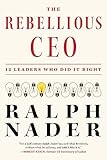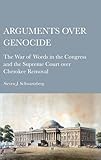Nuclear Disorder or Cooperative Security? U.S .Weapons of Terror, the Global Proliferation Crisis, And Paths to Peace
© 2007 Lawyers’ Committee on Nuclear Policy, Western States Legal Foundation, Reaching Critical Will of the Women’s International League of for Peace and Freedom
Published: Lawyer’s Committee on Nuclear Policy, New York
ISBN: 978-0-9792405-0-8
The 1980s tension between Washington and the Kremlin helped spur an enormous disarmament movement in the West, and made fear of nuclear holocaust a topic of household discussion. A major TV network produced a highly-rated 1983 movie about nuclear war; it’s doubtful that decade’s hardcore punk rock would have had quite the edge it did had a generation not been living in the shadow of Armageddon.
In the midst of a Presidential campaign where most Republican candidates claim the U.S. should be allowed to attack Iran with nuclear weapons to keep our enemy du jour from acquiring nuclear weapons, and few Democrats express reservations about such an attack, it seems that popular consciousness about the dangers of these weapons has largely evaporated.
Nuclear Disorder or Cooperative Security? U.S. Weapons of Terror, the Global Proliferation Crisis, And Paths to Peace was written to help people in the U.S. learn more about their own country’s “WMD.” A collection of essays by disarmament specialists with decades of activist experience, it is framed as an assessment of the report issued by the Weapons of Mass Destruction Commission headed by Hans Blix. Among other important topics, the book examines: missiles and weapons in space, nuclear weapons research and development, climate change and nuclear power, and demilitarization and redefining security in human terms.
The essays are packed with chilling information about the U.S. military-industrial complex. Dr. John Burroughs of the Lawyers’ Committee on Nuclear Policy writes that the Bush Administration’s “biodefense” labs “are designed to conduct research on pathogens for which there is no known cure, such as Ebola or Marburg.” Burroughs concludes, “these laboratories and programs inevitably train scientists and engineers in biowarfare techniques, and threaten to erode international mechanisms designed to guard against biological weapons.” Further, ‘de facto’ creation of ‘biowarfare pathogens,’ admitted by a former Homeland Security assistant secretary for science and technology, blurs the line between offensive and defensive biological weapons research, and is likely incompatible with the provisions of the [1972 Biological Weapons Convention].”
It’s both strange and more than a little scary that in Washington’s post-Soviet New World Order, the President of the U.S. actually giggles and grins as he says, “we got a leader in Iran who has announced that he wants to destroy Israel. So I’ve told people that if you’re interested in avoiding World War III, it seems like you ought to be interested in preventing them from having the knowledge necessary to make a nuclear weapon.” While Fox News backs up W. with a steady drumbeat about the supposed Iranian menace looming on the horizon, it’s understandable if most of the world’s population is more concerned with the only country in the world which has actually used nuclear weapons in a war. [Mohammed ElBaradei, head of the International Atomic Energy Agency (IAEA), recently reported that there is no evidence of an active nuclear weapons program in Iran. ElBaradei based his judgment on the findings of IAEA inspectors in Iran; he made a similar observation about Iraq in early 2003.] Nuclear Disorder or Cooperative Security?’s chapter on Iran and the nuclear fuel-cycle seconds the Blix Commission’s rejection of “the suggestion that nuclear weapons in the hands some pose no threat, while in the hands of others they place the world in mortal jeopardy.” The chapter calls for the U.S. to engage in direct negotiations with Iran which “should lead to a process resulting in the end of unilateral U.S. economic sanctions, the provision of credible security assurances by the United States, and preclusion of Iran’s acquisition of nuclear weapons, and culminating in the normalization of relations between the two countries.”
Though the end of the Cold War created hopes for a “peace dividend” (which never materialized), in the early 1990s, seasoned defense analyst Daniel Ellsberg pointed out that the danger of another Hiroshima had actually increased. When he first ran for President, George W. Bush argued for cuts in the U.S. nuclear arsenal, calling excess nuclear warheads “relics of the Cold War.” In 2001, the Department of Energy was spending $4.9 billion yearly on nuclear weapons, but by 2007 that number had jumped to $6.4 billion. As the Bush Administration released its 2002 “Nuclear Posture Review,” Donald Rumsfeld and Dick Cheney were obsessively promoting the development of new nuclear weapons, including a “bunker buster” 70 times more powerful than the Hiroshima A-bomb. The Natural Resources Defense Council estimated in 2004 that approximately $40 billion, or 10% of that year’s military budget, was spent on nuclear weapons.
In her essay discussing facilities which produce nuclear arms, Jacqueline Cabasso of the public interest group the Western States Legal Foundation writes, “It is difficult to overestimate the labs’ historical influence on the proliferation of nuclear weapons. Since their inception, the U.S. weapons labs have competed with each other to develop ever more sophisticated nuclear weapons systems, ‘selling’ their ideas to presidents, congresses, and the Pentagon, and actively opposing an end to nuclear testing.” Cabasso sees “an increasingly close relationship between the nuclear weapons laboratories and leading universities.” She cites “the $250 million the DOE [Department of Energy] awarded five major U.S. universities in 1997 to work with the Livermore Lost Alamos, and Sandia National Laboratories” on computer modeling and simulation of nuclear weapons tests.
Nuclear Disorder or Cooperative Security? recommends that the United States “make nuclear disarmament the leading edge of a global trend towards demilitarization and redirection of military expenditures to meet human and environmental needs.” A fair suggestion, but it won’t happen until public pressure forces the U.S. congress to take a stronger stand against the vested interests intent on maintaining the U.S. arsenal of some 10,000 nuclear weapons (including those deployed and in reserve). Peace and justice groups should use this important book as a tool to help accomplish that end.










